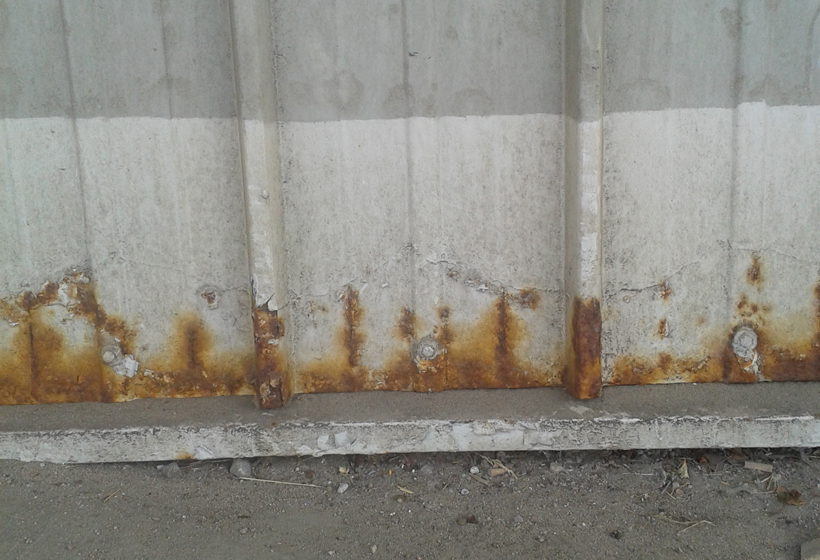How Can We Help You?
Please provide a few details below and we will respond to you as soon as possible.
Please provide a few details below and we will respond to you as soon as possible.
Cladding corrosion is a common problem. It’s one that’s easily solved. However, to understand the extent of the problem, the repair and refurbishment method required, and the paint system to install, you need experts, like Cladding Coatings, with a strong knowledge of corrosion classification and the applications best suited to your building.

Corrosion happens naturally. It’s simply due to the fact that your building has an exterior that is exposed to the elements. Of course, across the UK, the climate widely varies, with often cold, wet weather and an expansive coastline all being contributing factors to cladding corrosion.
However, corrosion happens at different rates, and to different degrees, based on the location of your building. Therefore, when you’re project managing a property or taking over the lease of a building, it makes sense to understand how the location is likely to have an impact on its upkeep.
The likelihood of steel corroding is measured by the ISO 12944 classification of salinity measures (how much salt there is the atmosphere). These levels are used to show you how quickly corrosion is expected to happen, and is based on where your building is and what its surroundings are like.
Take a look at the corrosion classification chart below.
• C1: heated buildings in a clean atmosphere i.e. schools
• C2: unheated buildings with likely condensation build-up, in a rural area i.e. sports halls
• C3: inshore buildings used as production bases in an industrial/urban setting i.e. breweries
• C4: inshore buildings in industrial areas, yet with medium salinity i.e. swimming pools
• C5I: buildings in industrial areas with high humidity in an aggressive atmosphere i.e. factories
• C5M: buildings in inshore or offshore areas with high salinity i.e. coastal marine properties.
Therefore, a C1 building is well heated and insulated, and usually inland and fairly rural. A C5 building, however, will be typically industrial or coastal, and exposed to heavy pollution.

It’s vital to understand the classifications so they can be treated with the right paint systems. At Cladding Coatings, we’re experienced and approved installers of some of the finest paint systems available. A great example of this is Tor Elastaseal™ Fibretex: a safe to use and easy to apply paint system that’s watertight and backed by a ten-year guarantee. It’s our system of choice when repairing cut-edge corrosion (the result of metal cladding that has deteriorated and begun to peel back). You can find out more about our metal cladding cut-edge corrosion repair work and the systems we use here.

Tried and tested methods matter. Thankfully, you’ll know you’re in safe hands with Cladding Coatings, as we’ve worked on many buildings in C4 and C5 environments. Take a look at some of the examples of our work in Hull, a location that is both coastal and industrial. Our expert team have been trusted with choosing and applying the right paint systems for large facades, such as car showrooms, in high salinity areas, with results that have delighted clients such as CarSupermarket.com.

On the West Coast of the UK, clients like The Hive on The Wirral have benefitted from our experience choosing the right classification of paint system. Find out how we carefully colour-matched cladding and applied an onsite spraying system in the C5 classification needed for ultimate protection.
When your building requires expert attention, it pays to have an experienced and knowledgeable team on hand. From onsite spraying to roof coating, our team helps building owners and estimators across the UK to get the right paint system for their property classification. For a no-obligation chat, call our team today.

We are now well into Winter, but at least the thaw of the latest recent icy weather has begun. As the colder months start to fade and the brighter days of spring approach, this is a unique window of opportunity…